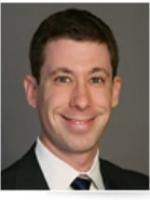The U.S. Environmental Protection Agency (EPA) recently proposed a revised policy to clarify what constitutes “ambient air” under the Clean Air Act, which will directly affect what areas stationary sources of air emissions must model to determine the effect of their facilities on air quality. The revised policy will most notably affect sources that have to model air quality around their facilities to demonstrate compliance with National Ambient Air Quality Standards (NAAQS), as well as sources applying for air construction permits under the EPA’s Prevention of Significant Deterioration (PSD) permitting program.
Under current EPA regulations, ambient air is broadly defined as the portion of the atmosphere (external to buildings), that the general public has access. Areas where access is not available are not “ambient.” Sources are often required under the NAAQS and the EPA’s PSD program to model facility impacts on ambient air. Thus, excluding areas from “ambient air” eliminates the need to model emissions impacts on those areas.
Through various guidance documents and letters, the EPA’s historic policy has been to only exclude those areas from the definition of ambient air that are (1) owned or under the control of the source and (2) not accessible by the public due to some physical barrier (like a fence). This policy was rooted in the EPA’s interpretation of the definition of ambient air under 40 CFR §50.1(e), rather than explicit regulatory language.
The EPA now believes that its prior characterization that “physical barriers” must exist to exclude an area as ambient air is unnecessarily limiting. Under the EPA’s revised draft policy, a source may use various “measures,” not limited to mere “physical barriers,” to preclude public access. As a result, non-ambient air can include areas subject to video surveillance, signage, security patrols, or other measures provided that the measures “provide reasonable assurance that the general public will not have access.”
What does the EPA’s revised policy mean for stationary sources if implemented as proposed?
-
Sources will have additional flexibility to determine what areas must be modeled for air quality analyses;
-
The EPA’s proposed interpretation is a change in policy rather than a change in regulation, meaning that sources should still consider how their respective state or local permitting authorities interpret the meaning of ambient air;
-
The draft policy appears to address only measures that a source can implement to preclude public access (e.g. install signs or physically patrol the area), as opposed to other physical conditions beyond fences that might already exist to preclude public access, such as roadways – this may be addressed in the final version of the EPA’s policy.
The EPA is accepting comments on its “Draft Revised Policy on Exclusions from ‘Ambient Air’” through December 21, 2018.



 />i
/>i
